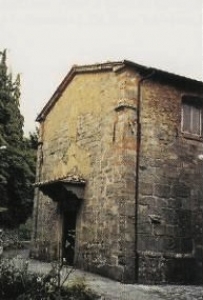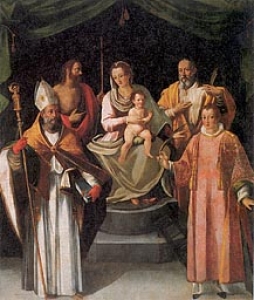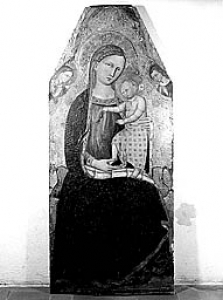
Information
Foundation:
X secolo
District/Location:
Villa Basilica, località Pariana
District:
Piana di Lucca


The church of Saints Lorenzo and Bartolomeo di Pariana, remembered as the village in which it was built since the 10th century, has undergone many changes over the centuries that the inscriptions placed on the external and internal walls of the building resemble as in a stone book.
Villa Basilica, località Pariana
The church and the village of Pariana have been remembered since the 10th century, but the current building was built in its single-nave plan - to which two lateral chapels were then added - at a later date, probably following the layout of the original medieval church. The carved wall shelf in the bell tower near the church (which bears a clock dated 1559) is definitely medieval: two birds are depicted on the sides of a chalice but it is not easy to give an exact date of the artifact, since it is a motif that enjoyed in the Middle Ages of a continuous fortune and that here seems recovered in relatively late epoch. The church has undergone restoration or reconstruction interventions - all testified also by stone inscriptions on the same building - in 1671, in 1625 and in 1774, the latter probably one of the most consistent. An obligatory and further reconstruction, which mainly concerned the interior, was necessary after the Second World War to remedy the huge damages suffered by the church. Inside the church important works are preserved: a Madonna among the saints Giovanni Battista, Prospero, Lorenzo and Bartolomeo of the last decades of the 16th century executed by the Pisan painter Baccio Lomi, father of the most famous Aurelio, today placed in the presbytery and probably coming from the high altar; a San Domenico di Soriano by Antonio Franchi, originally from the nearby Villa Basilica and active in the second half of the 17th century; the central part - with the Madonna and Child - of a dismembered polyptych executed in the first quarter of the 15th century, by Francesco Anguilla. At the beginning of the 19th century the sides of the work were still preserved in the church. The tabernacle for the holy oils is a work in marble attributable to the sphere of Matteo Civitali.
Scopri altre attrazioni vicino a Saints Lorenzo and Bartolomeo
See allYou may also like..
See allFind more
0














